Wisteria is a fairy tale-like ornamental plant because of its dreamy clusters of flowers. You will be enchanted sitting under the wisteria tree admiring its flowers. A tea table set is placed in front of the house, sitting and admiring is intoxicating and reluctant to leave. Wisteria flowers lead you into a wonderful fairy tale world.
Wisteria has woody and climbing types. The long-lived tree trunk will turn into wood with old and large roots, and the long vines will form flower arches or cling to the walls to make your house space beautiful and captivating. This plant is native to indigenous areas of China, but now it is grown all over the world and has become a favorite ornamental plant for many people.
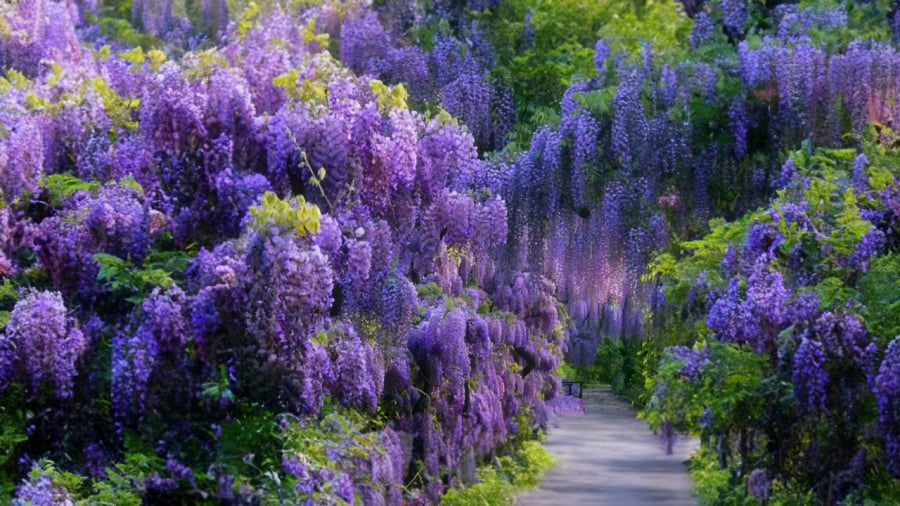
Wisteria means purple climbing vine. This flower species actually comes in many colors such as pink and white, but the purple color of wisteria is the most prominent.
Wisteria flowers are not only attractive in appearance but also have a pleasant fragrance, which adds to the charm of this ornamental plant. Wisteria is like a beautiful girl who is beautiful both on the outside and inside, graceful and beautiful in heart.
The wisteria trunk is large and strong, and the vines above can reach up to 20 meters long. Therefore, planting wisteria is very suitable for creating large arches. Wisteria planted for many years will stretch out strong arms and have dense chains of flowers on large branches, cascading like a purple waterfall, spectacular and beautiful.
The purple clusters gradually fade to white as the flowers bloom for a long time. Flowers grow in clusters along each branch, from 10-80cm long, and cascade down beautifully.
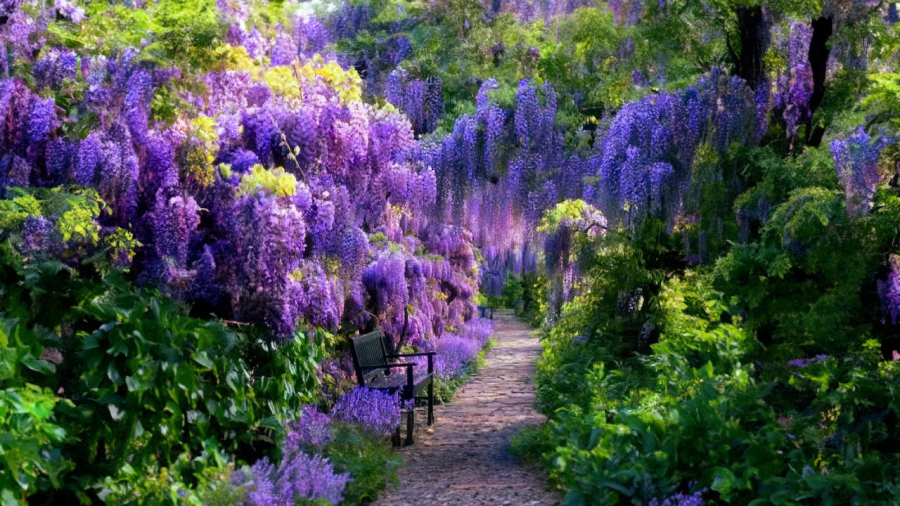
Wisteria cascades down like a curtain attracting the gaze of passers-by and creating a sense of tranquility. Wisteria flowers possess extraordinary strength, reflecting extremely intense vitality, expressing the love of youth and the ecstatic joy of adults. Wisteria symbolizes immortality in time. Not only that, in feng shui, this flower can also bring good luck, a favorable start for the homeowner.
Wisteria can become a heirloom tree that you can plant for future generations to enjoy. The longer the tree, the larger the trunk and the more flowers, the more valuable it is. Its fast growth makes wisteria suitable for ornamental planting.
Especially, wisteria climbs well and is easy to grow, enduring harsh weather conditions. In the months of April and May, wisteria blooms most abundantly, looking like a fairyland in the mortal world. At this time, sitting under the flower arch or setting up tables and chairs under the wisteria, it is truly a magical world. The wisteria festival is therefore very attractive to tourists. The beauty of wisteria makes people forget the way home. Each purple flower is like thousands of butterflies dancing. Beautiful colors, numerous flowers, wisteria is “rising” in many places, surpassing other blooming flowers such as cherry blossoms and magnolias…
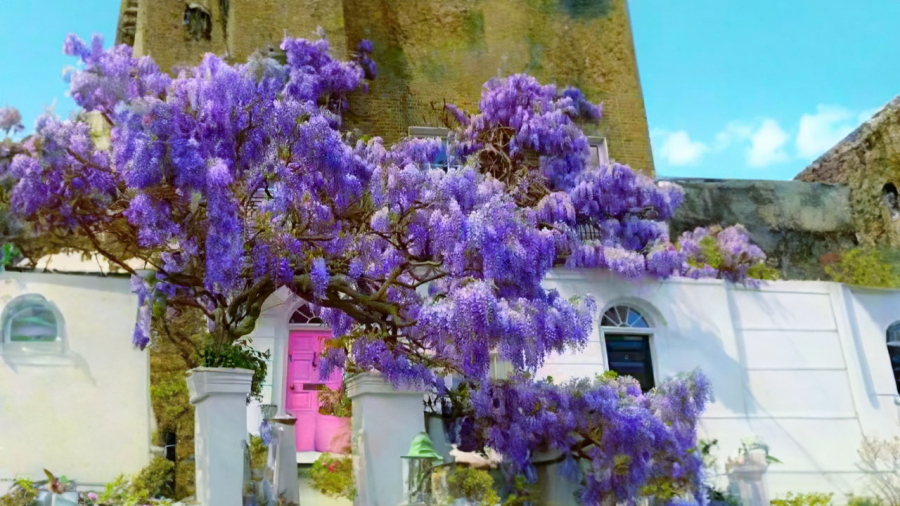
Wisteria brings a noble and wonderful beauty to your living space. Wisteria can live in hot, cold, sunny, or shaded weather. Wisteria seems immortal with time and space. Besides the role of landscaping to enjoy the cool air, wisteria flowers also have a special purifying effect on toxic gases such as sulfur dioxide and hydrogen dioxide. Therefore, having wisteria in front of your house brings beauty to both the image and the quality of the living space.
Wisteria is good at purifying the air and repelling mosquitoes. Wisteria flowers are also edible. In traditional medicine, wisteria has the effect of killing insects, detoxifying, and reducing pain… Now, when you plant wisteria, the tree will still be there telling your story after a hundred years. This flower deserves to be planted and passed down to future generations.
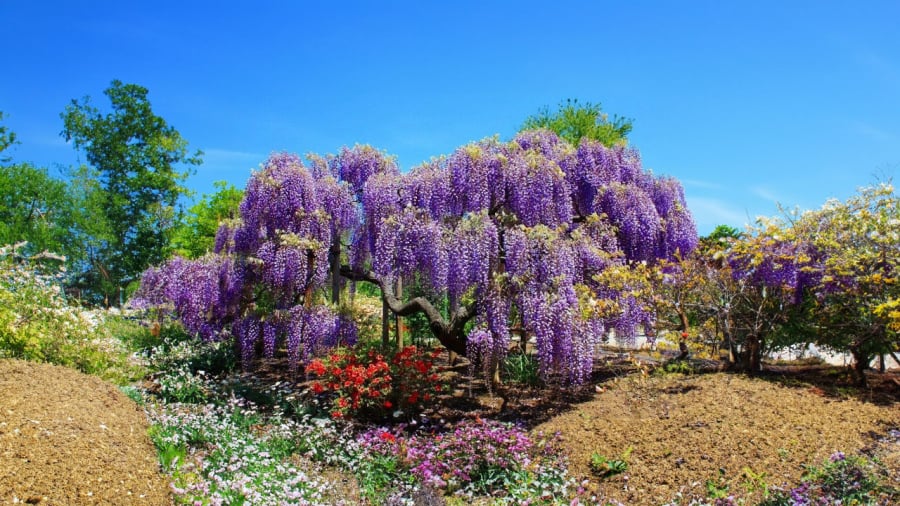
How to plant and care for wisteria
Choose a planting location: When planting wisteria, it is best to choose a location based on the wall and slightly off the main entrance to provide shade and block light in the house so that the tree can climb better. You don’t need too much light, but you should position the trellis slightly higher.
Select high and well-drained soil for planting to avoid waterlogging and help the tree grow faster.
Planting soil: Choose a deep hole for planting. It is best to plant wisteria in front of the house because its roots are very strong and need a deep layer of soil to support the tree’s growth. If the soil layer is shallow, the tree will grow slowly. You can also plant wisteria in pots, but they will grow very slowly, with small arbors but still blooming.
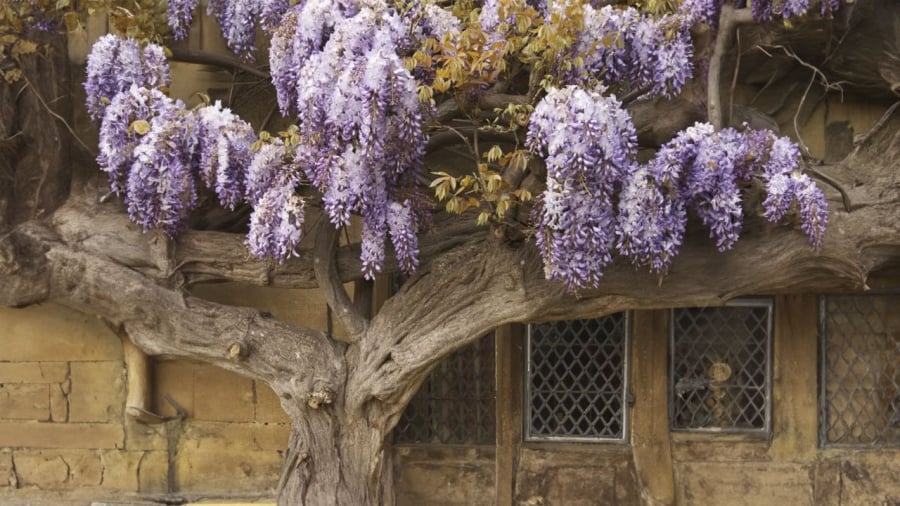
Regular watering and fertilizing: Wisteria plants love water and fertilizers. You need to water at least once a day when there is no rain to ensure the tree has enough moisture to grow. Water evaporates quickly due to high temperature in summer, so you can water once in the morning and once in the evening.
Use manure or composted manure to fertilize the ornamental plant once a month to stimulate faster growth.
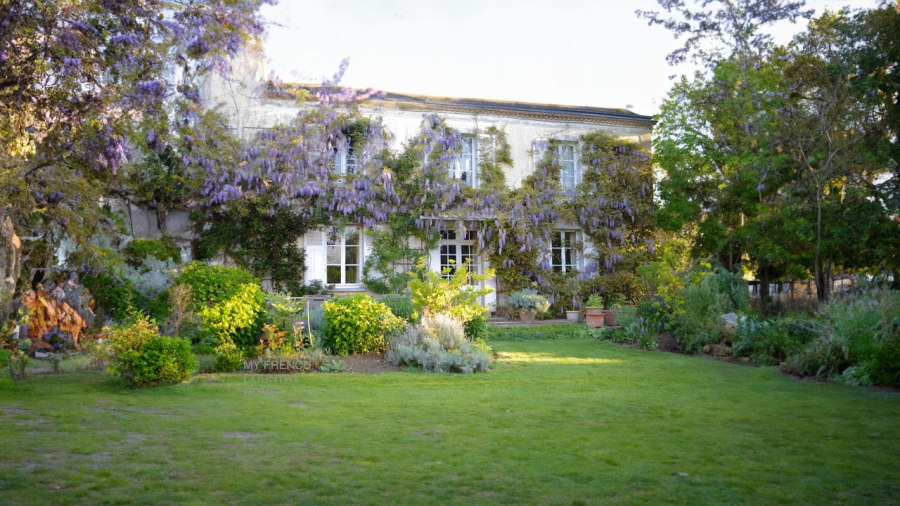
Regular pruning: Wisteria plants when pruned and trained to grow into beautiful shapes, the arbor becomes more beautiful and the flowers become more abundant. To grow into a tree, you need to prune some side branches in the early stages and leave one or two main trunks. When the wisteria grows larger, you can leave more branches and fix them in the places you want. If you want to create an arbor to sit under and enjoy the shade of the flowers, you need to create a trellis for the ornamental plant to grow up.
Wisteria is a beautiful and captivating ornamental plant for many people. Wisteria is so enchanting that in Japan, there is a wisteria festival attracting a large number of tourists every year. If you have a wisteria arbor, there will probably be many people asking to admire it.



































